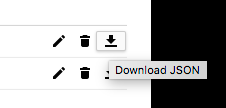Autenticare le app installate con gli account utente
Questa guida spiega come eseguire l'autenticazione utilizzando gli account utente per accedere all'API BigQuery quando l'app viene installata sui computer degli utenti.
Per garantire che l'app acceda solo alle tabelle BigQuery disponibili per l'utente finale, esegui l'autenticazione utilizzando una credenziale utente. Le credenziali utente possono eseguire query solo sul progetto Google Cloud dell'utente finale, non su quello dell'app. Di conseguenza, all'utente vengono addebitate le query anziché l'app.
Prima di iniziare
- Crea un Google Cloud progetto che rappresenti l'app installata.
- Installa le librerie client BigQuery.
-
Installa le librerie di autenticazione.
Java
Se utilizzi Maven, includi le seguenti dipendenze nel file pom.
Python
Installa l'integrazione di oauthlib per Google Auth.
pip install --upgrade google-auth-oauthlib
Node.js
Installa l'integrazione di oauthlib per Google Auth.
npm install google-auth-library
npm install readline-promise
Configurare le credenziali client
Utilizza il pulsante seguente per selezionare un progetto e creare le credenziali richieste.Creare manualmente le credenziali
- Vai alla pagina Credenziali nella console Google Cloud .
- Compila i campi obbligatori nella schermata per il consenso OAuth.
-
Nella pagina
Credenziali, fai clic sul pulsante Crea credenziali.
Scegli ID client OAuth.
- Seleziona Desktop come tipo di app, quindi fai clic su Crea.
-
Scarica le credenziali facendo clic sul pulsante Scarica JSON.

Salva il file delle credenziali in
client_secrets.json. Questo file deve essere distribuito con la tua app.
Autenticare e chiamare l'API
-
Utilizza le credenziali client per eseguire il
flusso OAuth 2.0.
Java
Python
Node.js
-
Utilizza le credenziali autenticate per connetterti all'API BigQuery.
Java
Python
Node.js
Quando esegui il codice campione, viene avviato un browser che richiede l'accesso al progetto associato ai segreti del client. Puoi utilizzare le credenziali risultanti per accedere alle risorse BigQuery dell'utente perché l'esempio ha richiesto l'ambito BigQuery.
Passaggi successivi
- Scopri di più su altri modi per autenticare la tua app per accedere all'API BigQuery.
- Scopri di più sull'autenticazione con credenziali utente finale per tutte le API Cloud.

